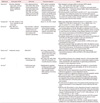1. Lee ES. A flood of health functional foods: what is to be recommended? J Menopausal Med. 2015; 21:12–18.
2. Yi SS, Hwang E, Baek HK, Kim TH, Lee HH, Jun HS, et al. Application of bioactive natural materials-based products on five women's diseases. J Menopausal Med. 2015; 21:121–125.
3. Park S, Yang MJ, Ha SN, Lee JS. Effective anti-aging strategies in an era of super-aging. J Menopausal Med. 2014; 20:85–89.
4. Yeo E. Menopause, aging and obesity. J Korean Soc Study Obes. 2002; 11:289–298.
5. Seo JS, Yoo DY, Jung HY, Kim DW, Hwang IK, Lee JY, et al. Effects of Dendropanax morbifera Leveille extracts on cadmium and mercury secretion as well as oxidative capacity: A randomized, double-blind, placebo-controlled trial. Biomed Rep. 2016; 4:623–627.
6. Bae K. The medicinal plants of Korea. Seoul: Kyohak Publishing;2000.
7. Hyun TK, Kim MO, Lee H, Kim Y, Kim E, Kim JS. Evaluation of anti-oxidant and anti-cancer properties of Dendropanax morbifera Leveille. Food Chem. 2013; 141:1947–1955.
8. Lai YC, Lee SS. Chemical constituents from Dendropanax dentiger. Nat Prod Commun. 2013; 8:363–365.
9. Moon HI. Antidiabetic effects of dendropanoxide from leaves of Dendropanax morbifera Leveille in normal and streptozotocin-induced diabetic rats. Hum Exp Toxicol. 2011; 30:870–875.
10. Chung IM, Kim MY, Park WH, Moon HI. Antiatherogenic activity of Dendropanax morbifera essential oil in rats. Pharmazie. 2009; 64:547–549.
11. Chung IM, Song HK, Kim SJ, Moon HI. Anticomplement activity of polyacetylenes from leaves of Dendropanax morbifera Leveille. Phytother Res. 2011; 25:784–786.
12. Kim RW, Lee SY, Kim SG, Heo YR, Son MK. Antimicrobial, antioxidant and cytotoxic activities of Dendropanax morbifera Leveille extract for mouthwash and denture cleaning solution. J Adv Prosthodont. 2016; 8:172–180.
13. Kim W, Kim DW, Yoo DY, Jung HY, Kim JW, Kim DW, et al. Antioxidant effects of Dendropanax morbifera Leveille extract in the hippocampus of mercury-exposed rats. BMC Complement Altern Med. 2015; 15:247.
14. Kim W, Kim DW, Yoo DY, Jung HY, Nam SM, Kim JW, et al. Dendropanax morbifera Leveille extract facilitates cadmium excretion and prevents oxidative damage in the hippocampus by increasing antioxidant levels in cadmium-exposed rats. BMC Complement Altern Med. 2014; 14:428.
15. Chien SC, Tseng YH, Hsu WN, Chu FH, Chang ST, Kuo YH, et al. Anti-inflammatory and anti-oxidative activities of polyacetylene from Dendropanax dentiger. Nat Prod Commun. 2014; 9:1589–1590.
16. Akram M, Kim KA, Kim ES, Syed AS, Kim CY, Lee JS, et al. Potent anti-inflammatory and analgesic actions of the chloroform extract of dendropanax morbifera mediated by the Nrf2/HO-1 pathway. Biol Pharm Bull. 2016; 39:728–736.
17. Yu HY, Kim KS, Lee YC, Moon HI, Lee JH. Oleifolioside A. A new active compound, attenuates LPS-stimulated iNOS and COX-2 expression through the downregulation of NF-kappaB and MAPK activities in RAW 264.7 macrophages. Evid Based Complement Alternat Med. 2012; 2012:637512.
18. Oka K, Saito F. Allergic contact dermatitis from Dendropanax trifidus. Contact Dermatitis. 1999; 41:350–351.
19. Oka K, Saito F, Yasuhara T, Sugimoto A. The major allergen of Dendropanax trifidus Makino. Contact Dermatitis. 1997; 36:252–255.
20. Choi JH, Kim DW, Park SE, Lee HJ, Kim KM, Kim KJ, et al. Anti-thrombotic effect of rutin isolated from Dendropanax morbifera Leveille. J Biosci Bioeng. 2015; 120:181–186.
21. Jin CY, Yu HY, Park C, Han MH, Hong SH, Kim KS, et al. Oleifolioside B-mediated autophagy promotes apoptosis in A549 human non-small cell lung cancer cells. Int J Oncol. 2013; 43:1943–1950.
22. Lee JW, Kim KS, An HK, Kim CH, Moon HI, Lee YC. Dendropanoxide induces autophagy through ERK1/2 activation in MG-63 human osteosarcoma cells and autophagy inhibition enhances dendropanoxide-induced apoptosis. PLoS One. 2013; 8:e83611.
23. Park SE, Sapkota K, Choi JH, Kim MK, Kim YH, Kim KM, et al. Rutin from Dendropanax morbifera Leveille protects human dopaminergic cells against rotenone induced cell injury through inhibiting JNK and p38 MAPK signaling. Neurochem Res. 2014; 39:707–718.
24. Lee JW, Park C, Han MH, Hong SH, Lee TK, Lee SH, et al. Induction of human leukemia U937 cell apoptosis by an ethanol extract of Dendropanax morbifera Lev. through the caspase-dependent pathway. Oncol Rep. 2013; 30:1231–1238.
25. Yu HY, Jin CY, Kim KS, Lee YC, Park SH, Kim GY, et al. Oleifolioside A mediates caspase-independent human cervical carcinoma HeLa cell apoptosis involving nuclear relocation of mitochondrial apoptogenic factors AIF and EndoG. J Agric Food Chem. 2012; 60:5400–5406.






 PDF
PDF ePub
ePub Citation
Citation Print
Print



 XML Download
XML Download